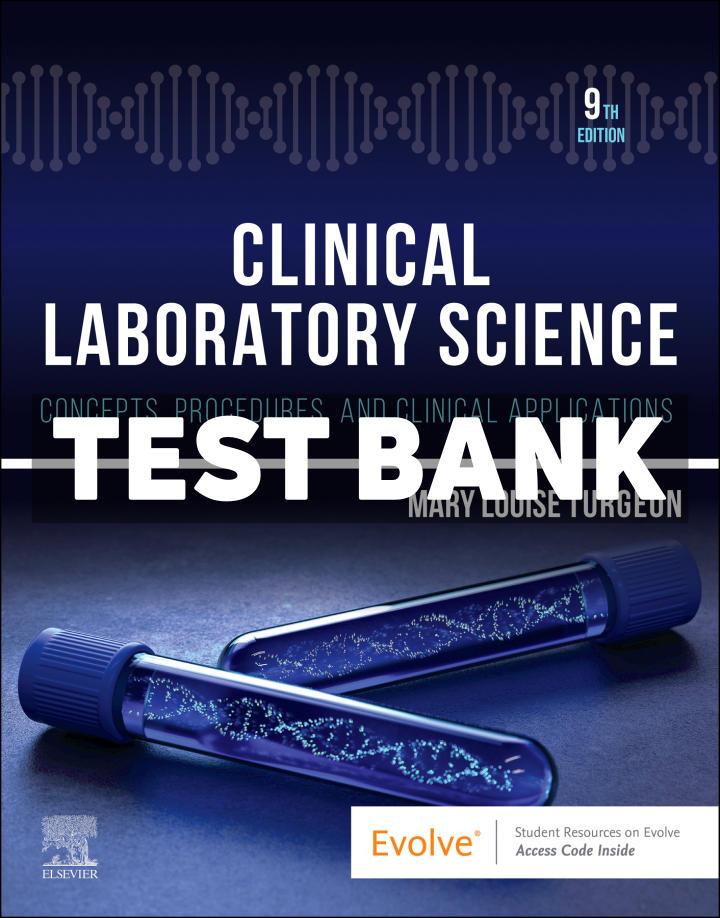

Test Bank - Chapter 01
Q: The ASCLS professional Code of Ethics states that all laboratory professionals have an ethical responsibility to exercise proper conduct toward entities except.
A. Patients
B. Colleagues
C. The Profession
D. International regulatory agencies (Correct)
Q: What is the role of the chief executive officer (CEO) of a health care organization?
A. To implement policy and daily activities
B. To set policy and guide the organization (Correct)
C. To manage financial affairs of the organization
D. To manage the hospital information system
Q: Which certifying agency or agencies has/have not been granted deemed status to act on behalf of the federal government in matters of laboratory accreditation?
A. Commission on Office Laboratory Accreditation (COLA)
B. College of American Pathologists (CAP)
C. The Joint Commission (TJC)
D. State laboratory accreditation boards (Correct)
Q: What is the definition of a waived laboratory test?
A. One that is cleared by the FDA for home use (Correct)
B. A test that can be performed by a preferred provider
C. One that has a small reasonable risk of harm to the patient if performed incorrectly
D. A test that is moderately complex
Q: CLIA personnel requirements define the responsibilities of technologists working in what level/levels of laboratory testing?
A. Research
B. Moderate complexity
C. High complexity
D. Physician Offices (Correct)
Q: Which is the fastest growing segment of laboratory testing?
A. Dry reagent chemistry
B. Lab on a chip technology
C. Molecular diagnostics (Correct)
D. Automation of blood cell counting
Q: Which factor does informed consent upon the patient’s hospital admission include?
A. An agreement to the nature of the testing to be done
B. An agreement to what will be done with laboratory test results
C. Consent to many routine procedures that may be performed
D. All of these (Correct)
Q: Which federal legislation requires strict confidentiality of patient results?
A. Clinical Laboratory Improvement Act (CLIA’88)
B. Health Insurance Portability and Accountability Act (HIPAA) (Correct)
C. National Certifying Agency
D. Combined state laws
Q: Which rights do the revised CLIA’88 and HIPAA regulations ensure?
A. The patient’s right to access their own laboratory reports
B. The patient’s right to give a personal representative the patient’s completed test reports
C. The patient’s right to refuse laboratory testing
D. Both the patient’s right to access their own laboratory reports and the patient’s right to give a personal representative the patient’s completed test reports. (Correct)
Q: What is the definition of chain of custody?
A. The physical transport of a specimen needed for legal reasons
B. The escorting of patients who are prison inmates
C. The process of documenting each step of specimen analysis and reporting of the specimen results (Correct)
D. The documentation of quality control when reporting a patient’s laboratory results
Q: What describes situational ethics?
A. A system that is governed by strict principles
B. A system that rules by categorical principles
C. A system where acts are judged within a context (Correct)
D. A system where legal principles lead all other acts
Q: Which statement best describes ethics?
A. Ethics are laws that people live by.
B. Ethics are a set of moral principles. (Correct)
C. Ethics are voted on by the people.
D. Ethics are required in every profession.
Q: Which is the definition of a tort?
A. A tort is a criminal wrong.
B. A tort is a type of abuse.
C. A tort is a crime against women.
D. A tort is a wrongdoing that causes injury. (Correct)
